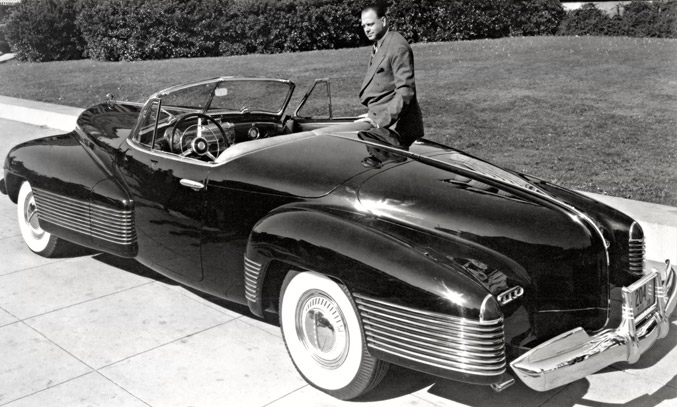 Discussions of designers and General Motors will never occur without some mention of Harley Earl. Earl was the designer behind some of the most flamboyant GM vehicles, such as the Cadillacs of the 1950s, and some of the most beautiful concept cars ever built at GM. He was a major design force of the 1950s and 60s and here’s his story.
Discussions of designers and General Motors will never occur without some mention of Harley Earl. Earl was the designer behind some of the most flamboyant GM vehicles, such as the Cadillacs of the 1950s, and some of the most beautiful concept cars ever built at GM. He was a major design force of the 1950s and 60s and here’s his story.
Harley Earl was born in 1893 in a west coast location that would become known as Hollywood. The late 1800s and early 1900s were times of great economic expansion that held much promise for anyone young. Fortunately Harley was born into a family of horse-drawn carriage makers whose business eventually evolved into building automobile bodies. Back then there were few car stylists who worked at the major automobile firms and the styling, and even construction, of automobile bodies was often outsourced to independent firms such as Briggs, Fleetwood and others. And among these big names, there were dozens of small custom design shops, such as the Earl Automotive Works in Los Angeles, Ca.
Harley grew up designing custom automobile bodies in the family firm and over the years became especially good when it came to aesthetic details. So good that his designs eventually made their way all the way to none other than Alfred Sloan, who was then the president of General Motors. It wasn’t long before Earl was hired at GM and was in put in charge of GM’s new department of “Art and Color”. Today this group would be named the “Styling” department. In his new role, he flourished and pioneered many new automotive design techniques that are still used today. One of the most famous is the full-size clay model technique that is used by automobile manufacturers world-wide when designing new cars.
Earl was the primarily design influence behind many of the most defining artistic automotive details of the time. For example, the elimination of running boards in the late 1930s is attributed to Harley Earl. As well as automatic power convertible tops, the adoption of headlights fitted into front fenders, piller-less doors and, this one is big: the rear tail fin.
Earl also introduced the automobile business to another very, very successful new idea: the concept car. Starting with his Buick Y-Job in 1938, concept cars became major driving forces at car shows and were popular because they generated great enthusiasm and press. Later concept cars attributed to Earl were the 1951 Buick LaSabre, 1956 Pontiac Club De Mer, 1956 Oldsmobile Golden Rocket, and the original 1954 Chevrolet Corvette. As most automotive enthusiasts know, the Corvette has gone on to become the biggest selling sports car in history.
Harley Earl retired from General Motors in 1958 after overseeing the design of the 1959 models. He was succeeded as vice-president with responsibility for the Design and Styling Department by Bill Mitchell under whose leadership GM design became far less ornamental. Before Earl retired, General Motors became the largest corporation in the world, and design was acknowledged as the leading sales factor contributing to that statistic.
Source: Lynch Chevrolet
Previous article
The DeLorean Story